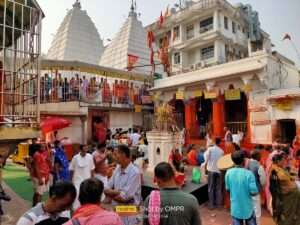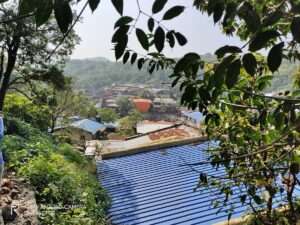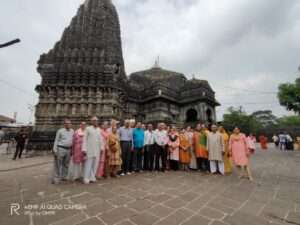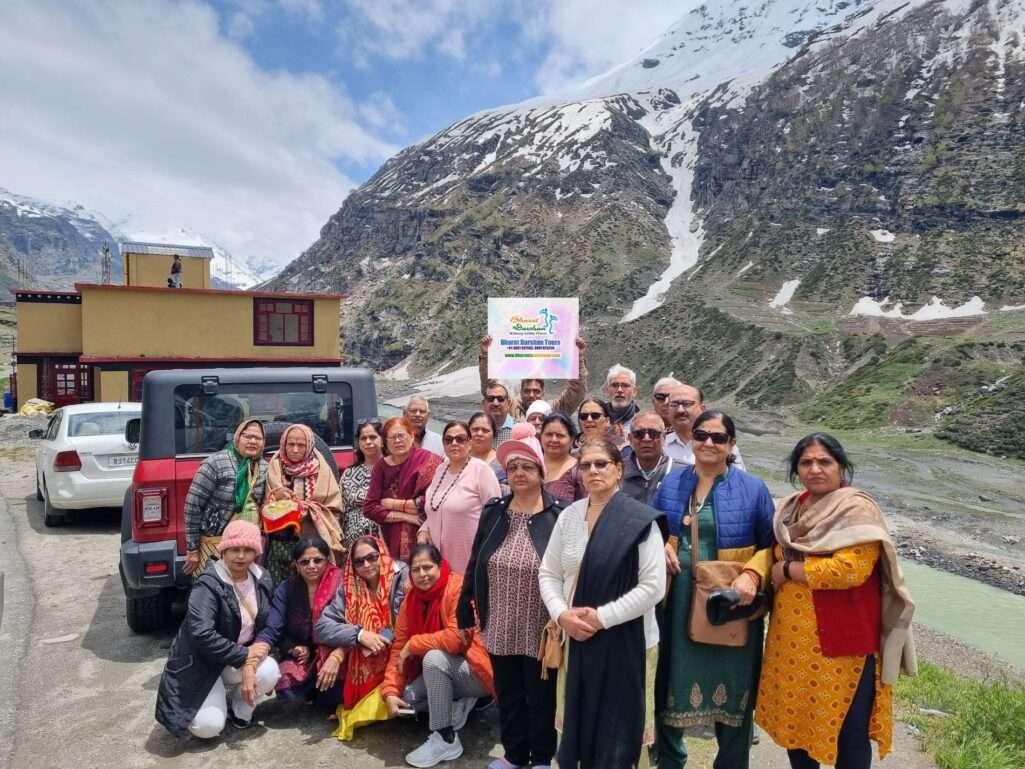Practice of pilgrimage is common from the ancient days and is still growing considerably. India is the birthplace of four of the world’s major religions- namely Hinduism, Buddhism, Jainism and Sikhism. In India Hindus call the sacred places to which they travel tirthas, and the action of going on a pilgrimage tirtha-yatra. Together with tourism it has grown considerably among the Travellers both domestic and international.
- Kedarnath in Rudraprayag, Uttarakhand
- Vishwanath in Varanasi, Uttar Pradesh
- Baba Baidyanath in Deoghar, Jharkhand
- Mallikarjuna in Srisailam, Andhra Pradesh
- Ramanathaswamy in Rameshwaram, Tamil Nadu
- Bhimashankar in Maharashtra
- Trimbakeshwar in Nashik, Maharashtra
- Grishneshwar in Ellora, Maharashtra
- Omkareshwar in Khandwa, Madhya Pradesh
- Mahakaleshwar in Ujjain, Madhya Pradesh
- Somnath in Gir Somnath, Gujarat
- Nageshvara in Dwarka, Gujarat
Kedarnath Jyotirlinga: Among the 12 Jyotirlinga the Kedarnath temple is located in the highest of all at 3500 m above sea level in the Rudraprayag district of Uttarakhand and is open only from April (Akshaya Tirtha) to November (Karthik Purnima). The rest of the months the deities carried down and is worshipped at Ukhimath. The shrine is located at a distance of 14 kms from approachable road. From here pilgrimage visiting has to trek or take Pony ride, Pithu and Palki. Also, the shrine can be reached by Helicopter services operated by many operators. According to Hindu legends, the temple was initially built by Pandavas, and is one of the twelve Jyotirlinga s, the holiest Hindu shrines of Shiva..
Kashi Vishwanath Temple: This temple is located in the Ancient city of India Varanasi or Varanas on the western holy bank of mighty river Ganges. The main deity is known by the name Vishvanatha or Vishveshvara meaning Ruler of The Universe. Varanasi city is also called Kashi, and hence the temple is popularly called Kashi Vishvanath Temple. Its name originally was Vishveshvara (broken down Vishwa: Universe, Ish: Lord; Vara: Excellent) or Lord of the Universe.

Baba Baidyanath Jyotirlinga
Baba Baidyanath Dham: Located in Deoghar Santhal Parganas division of the state of Jharkhand, India. It is a temple complex consisting of the main temple of Baba Baidyanath, where the Jyotirlinga is installed, and 21 other temples complex. According to Hindu beliefs, the demon king Ravana worshipped Shiva at the current site of the temple to get the boons that he later used to wreak havoc in the world. Ravana offered his ten heads one after another to Shiva as a sacrifice. Pleased with this, Shiva descended to cure Ravana who was injured. As he acted as a doctor, he is referred to as Vaidhya (“doctor”). From this aspect of Shiva, the temple derives its name.
Mallikarjuna Jyotirlinga: Mallikarjuna of Srisailam is located in Andhra Pradesh state dedicated to Lord Shiva and Parwati. The temple is one of the 12 Jyotirlinga and the Shakti Peethas of goddess Parvati. This is one of the three temples in India in which both Jyotirlinga and Shakti Peeth worshipped.
Shri Ramanathaswamy: Located in Indian state of Tamil Nadu and located on Pamban Island connected by the famous Pambam Bridge. The temple is also considered to be the main part of Char Dham, the other being Kedarnath, Puri and Dwarka.

Bhimashankar Jyotirlinga
Bhimashankar Jyotirlinga: The Bhimashankar Jyotirlinga Temple is located around 110 kms from Pune. The region is also the source of Bhima River a tributary of River Krishna. The temple is built in a graceful manner.It is believed that the ancient shrine was erected over a Swayambhu Lingam (that is the self-emanated Shiva Lingam). It can be observed that the Lingam is exactly at the centre of the floor of the Garbhagriha (the Sanctum Sanctorum) of the temple. Intricate carvings of divine beings, interspersed with human figurines adorn the pillars and the doorframes of the temple. Scenes from mythology find themselves captured in these magnificent carvings.

Trimbakeshwar Jyotirlinga Darshan
Trimbakeshwar Jyotirlinga: The Trimbakeshwar Jyotirlinga temple is located 28 kms from Nashik city and the origin of sacred Godavari River is near to here. Kusavarta, a kunda (sacred pond) in the temple premises is the source of the Godavari River, the longest river in peninsular India. The temple has three lingams (an iconic form of Shiv) representing Shiv, Vishnu and Brahma. The temple tank is called Amritavarshini, which measured 28 m (92 ft) bu 30 m (98 ft). There are three other bodies of water, namely, Bilvatheertha, Viswananthirtha and Mukundathirtha.
Grishneshwar Jyotirlinga: The Word Grishneshwar denotes “Lord of Compassion” located in Ellora of Maharashtra state about 32 kms from Aurangabad. This pilgrimage site is located in Ellora (also called Verul), less than a kilometer from Ellora Caves – a UNESCO World Heritage site. This 240 ft x 185 ft temple is the smallest Jyotirlinga temple in India. Halfway up the temple, Dashavataras of Vishnu are carved in red stone. A court hall is built on 24 pillars. On these pillars, there are carvings summarizing various legends and mythologies of Shiva.
Omkareshwar Jyotirlinga: The Omkareshwar Jyotirlinga Temple is located on Omkar Mountain and Island in the middle of Narmada River. There are two main temples, namely Omkara and Amareshwar, located on the Island and south bank or River Narmada on the main land. The temple is situated in the Khandwa district of Madhya Pradesh.
Mahakaleshwar Jyotirlinga: The most sacred abodes of Lord Shiva are located in Ujjain the ancient city of Madhya Pradesh and is about 56 kms from Indore. The Mahakal dominates the life of the city and the people living here. The shrine is also revered as one of the 18 Maha Shakti Peethas. The idol of Mahakaleshwar is known to be Dakshinamurthy means facing South which is unusual. This Jyotirlinga is said to be ‘Swayambhu’ (self-manifested) that obtained its ‘Shakti’ (power) from within itself, unlike other lingams that were established ritually by chanting ‘mantra’.
Somnath Jyotirlinga: The temples of Gold and is considered to be the first site for Darshan was destroyed numerous times by Mughal’s and rebuilt 16 times. Temple is located in the Westernmost part of India and lies in the longitude of no lands from temple seashore to Antarctica.
Nageshwar Jyotirlinga Temple: The Nageshwar Jyotirlinga temple is located between Dwarka City and Beyt Dwarka Island. It is enshrined by one of the 12 Swayambhu (self-existent) Jyotirlinga s in the world, in an underground sanctum. A 25 m tall statue of a sitting Lord Shiva and a large garden with a pond are major attractions of this rather serene place. Some archaeological excavations claim five earlier cities at the site.




